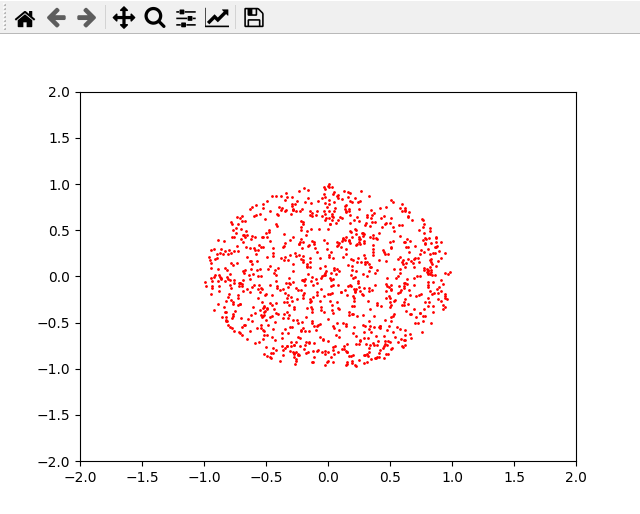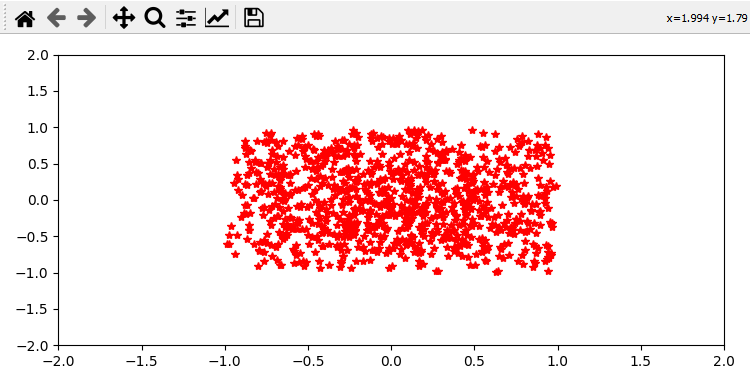I want to generate points in uniform distribution in a circle. So I am using equations to get the coordinates of the points. When I am using those equations in Python, I am obtaining correct results. But, when I am using the same equations in C++, I am getting distribution in a square instead of a circle…
I don’t know what is going on.
Here is the code in Python to generate uniform distribution in a circle:
import matplotlib.pyplot as plt
import numpy as np
circle_radius = 1
num = 1000
theta = np.random.uniform(0.0, 2.0*np.pi, num)
zero_to_one = np.random.uniform(0.0, 1.0, num)
x = circle_radius * np.sqrt(zero_to_one) * np.cos(theta)
y = circle_radius * np.sqrt(zero_to_one) * np.sin(theta)
plt.plot(x, y, "ro", ms=1)
plt.axis([-2.0, 2.0, -2.0, 2.0])
plt.show()
When I run this, I am obtaining:
Now, lets go to C++. Here is the code:
#include <iostream>
#include <random>
#define M_PI 3.1415926f
int main()
{
std::mt19937 generator(std::random_device{}());
std::uniform_real_distribution<float> zero_to_one(0.0f, 1.0f);
std::uniform_real_distribution<float> theta(0.0f, 2 * M_PI);
float circle_radius = 1.0f;
const int number_of_points = 1000;
for (size_t i = 0; i < number_of_points; ++i)
{
float x = circle_radius * sqrt(zero_to_one(generator)) * cos(theta(generator));
float y = circle_radius * sqrt(zero_to_one(generator)) * sin(theta(generator));
}
}
When I copy the points coordinates generated using the above code to Python’s script, which plots points, I am getting:
Why?
Here is the Python code to plot points of given coordinates:
import matplotlib.pyplot as plt
plt.rcParams["figure.figsize"] = [7.50, 3.50]
plt.rcParams["figure.autolayout"] = True
x=[0.2, 1, 0.5, -0.5]
y=[0.2, 1, 0.5, -0.5]
plt.plot(x, y, 'r*')
plt.axis([-2.0, 2.0, -2.0, 2.0])
for i, j in zip(x, y):
plt.text(i, j+0.5, ''.format(i, j))
plt.show()
This is very strange.

